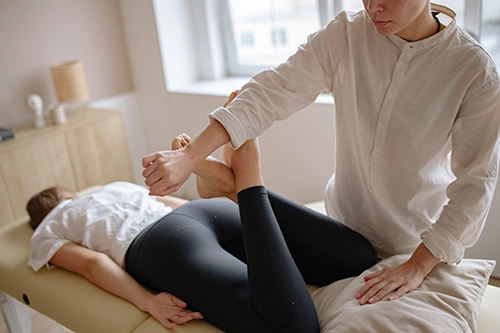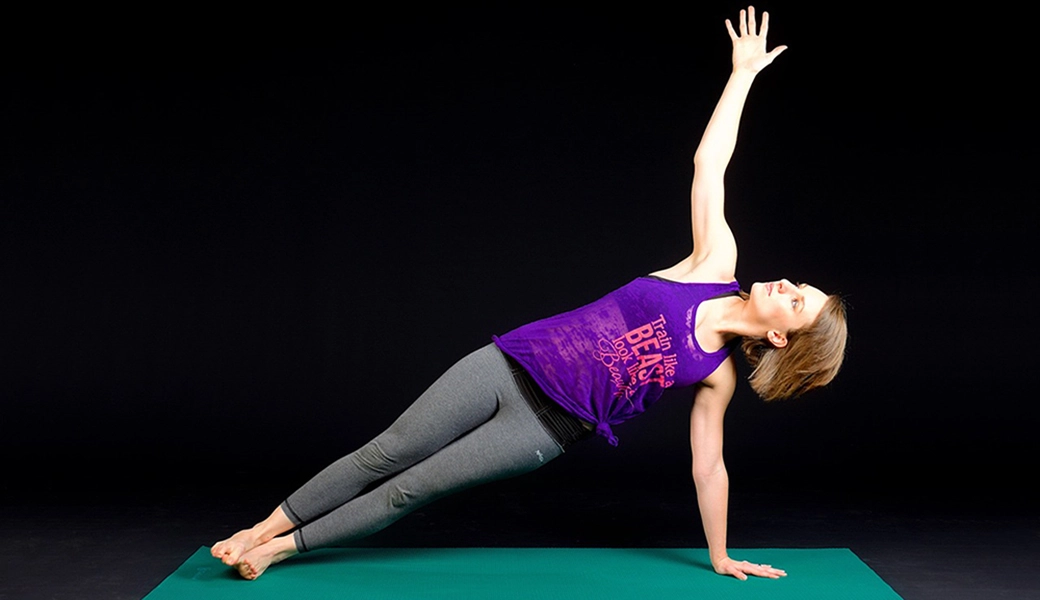Are you suffering from SI joint pain and worried about what you can and cannot do? Check out this list of exercises you should avoid.
A common treatment for SI joint pain is exercise. But not all exercises are equal. In fact, some should be avoided. If you suffer from SI joint pain, avoid these exercises: sit-ups, crunches, planks, running, tennis, golf, leg lunges, jumping rope, and cardio machines. For more direction, consult a chiropractor or physical therapist.
What does the Science say About SI Joint Pain?
Low back pain is a common type of pain for many people in the modern era. However, diagnosing the source of lower back pain can sometimes be difficult. One study by the journal “Current Orthopaedic Practice” found that 15% of patients with low back pain were suffering such as a result of the SI joint (sacroiliac joint). (1)
Another study by the Wiley Online Library found a higher percentage, from 16% to 30%, to be the cause of low back pain in cases of chronic mechanical low back pain. The same study found that the treatment of SI joint pain is most effective in a multidisciplinary approach including exercise therapy and manipulation (chiropractic). (2)
A case study in Science Direct involved a pregnant 35-year-old woman with, among other things, a functional disturbance in left sciatic joint. The menu of treatments used involved both chiropractic spinal manipulation and exercise, as well as soft tissue therapy and ergonomic advice. After six weeks, her low back pain was significantly improved and many of her functional abilities like walking and sitting had also improved. (3)
As for now, let’s dig into the details of each of these a little bit more.
1. Avoid Sit Ups
If you suffer from SI joint pain, one of the first exercises you should avoid doing is the basic sit-up. When doing sit-ups you lift your torso upwards so that your chest and abdomen move towards your knees. This movement creates stress and tension in the ligaments that connect your pelvis and SI joint. This can further strain the SI joint making the pain worse.
2. Avoid Crunches
Much like the sit-up, you should do your best to avoid doing crunches when you have sacroiliac joint pain. Crunches work the abdomen and in the process, they involve lifting your chest toward your knees. Much like in the sit-up, this movement can create stress and tension in the ligaments throughout the SI joint. This, in turn, can aggravate your SI joint further, increasing the levels of pain you suffer, and increasing the chances of other serious developments.
3. Avoid Planks
The plank is an exercise commonly used in Yoga to develop the muscles in your shoulders, abdomen, hips, and buttocks. Again, this exercise will stress the muscles throughout the hip and pelvis by holding the same position for an extended period of time. Ideally, this will strengthen the ligaments and muscles around the SI joint, but if you already have issues with your SI joint, it will likely aggravate those issues instead. So, again, you are advised to avoid doing planks.
4. Avoid Running
Running is a high impact sport for the hips. Every step taken consists of a transfer of weight from one leg and its corresponding hip, to the other leg and its corresponding hip. Every step leads to a jarring impact that strains the SI joint connections to the hip on that side of the body.
The result is, again, stress and tension in the SI joint throughout. So, if you suffer from SI joint pain, you should avoid running as an exercise. In fact, you should even avoid jogging, and, instead, limit yourself to walking.
5. Avoid Tennis
Tennis is a sport consisting of lots of running back and forth, sudden stops and changes in direction, and twisting of your pelvis and hips this way and that. It is obviously stressful to your hips, pelvis, and the ligaments throughout. So, avoid this sport, and other sports like it. This includes volleyball, racquetball, and badminton.
6. Avoid Golf
Golf is usually thought of as one of the more gentle sports. You hit the golf ball with the club and then walk a short distance and hit again. What’s hard about that? Well, the difficulty with golf and the SI joint revolves around the golf swing. The ideal golf swing involves a significant rotation of the pelvis that will aggravate an already injured SI joint. Because of this you should avoid playing golf.
7. Avoid Leg Lunges
Leg lunges should also be avoided if you suffer from SI joint pain. Leg lunges involve the shift of your weight from one leg and one side of your hip to the other. The stress and tension will naturally increase as you step into the lunge and sink your hip. If you have SI joint issues, this will likely make them worse. The connecting ligaments will be strained and the surrounding muscles will be stressed.
8. Avoid Jumping Rope
Jumping rope is another exercise you should avoid when you have SI joint pain. First, you strain the ligaments as you jump into the air, and then, they are strained even further as you fall down and land. Jumping rope involves a double high-impact landing on the ground that sends stress, tension, and shock up through the legs and into the rest of the body. Overall, it’s just bad for SI joint conditions.
9. Avoid Cardio Machines
Whether it’s a treadmill, stair climber, or other cardio machine, if you suffer from SI joint pain, you should avoid using it. The reasoning is pretty obvious. A treadmill usually consists of running or jogging in place. As a result, it bears the same warning as running for exercise does. The stair climber (and many other cardio machines), also incur similar warnings for similar reasons. The stair climber, in fact, is probably worse than simple running because it creates even more stress on the SI joint.

How To Care for SI Joint Pain?
After giving you all those things to avoid doing when you have SI joint pain, I think it worthwhile to give you some pointers on what activities you should engage in to treat and deal with your SI joint pain.
See a Chiropractor
Chiropractors are experts in the nervous and musculoskeletal system. As such, they are highly qualified to not only diagnose whatever is causing your pain (like issues in the SI Joint), but also to prescribe an overall treatment to deal with and eliminate the pain.
Many Chiropractor’s offices also employ physical therapists who can not only tell you what exercises and activities you should avoid (like those above), but they can also prescribe appropriate exercises for you to do.
Adjust your Sleeping Habits
We spend roughly one-third of our lives asleep in bed. As a result, the time you spend sleeping can have a significant impact on your health. If you sleep wrong, you might just wake with a pain you’ve never had before.
If you fail to treat it properly, it may worsen over time until it becomes a serious problem, even a disability. SI joint pain is one such issue that can develop from poor sleep habits. The sleeping habits that are most likely to impact your Si joint pain include:
- Your sleep position and posture
- Your use of pillows
- Your use of the correct mattress
To learn some of the specifics of these habits, check out this post on the best sleeping position for SI joint pain.
Conclusion
If you suffer from SI joint pain, the best thing you can do is to consult a medical professional like a chiropractor or physical therapist (or even a physician). Just be aware that, although exercise is a good way to treat SI joint pain, there are a number of fairly common exercises you really must avoid. With appropriate guidance, though, you’ll be on the road to recovery.
To learn more about your condition, visit your local chiropractor at Better Health Anchorage in Alaska.









